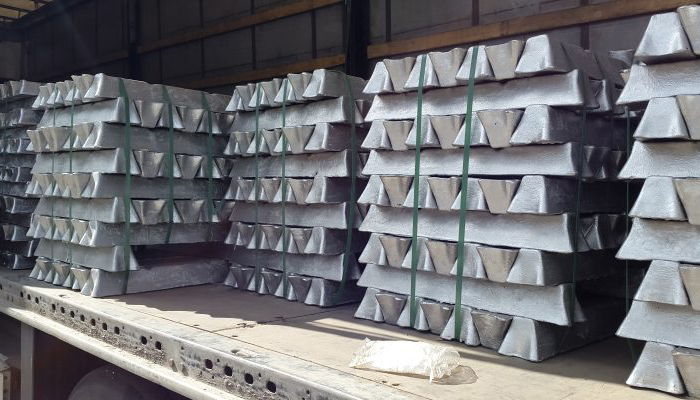Aluminum and aluminum alloys

(Al, lat. Aluminum) – an element of the 13th group of the periodic table of chemical elements, the third period, with atomic number 13. It belongs to the group of light metals. The most common metal and the third most abundant chemical element in the earth’s crust (after oxygen and silicon).
Simple substance aluminum is a lightweight paramagnetic metal of silver-white color, easily amenable to molding, casting, machining. Aluminum has a high thermal and electrical conductivity, resistance to corrosion due to the rapid formation of strong oxide films that protect the surface from further interaction.
Aluminum was first produced by Danish physicist Hans Oersted in 1825 by the action of potassium amalgam on aluminum chloride followed by distillation of mercury.
The name of the element is derived from lat. alumen – alum.
Before the development of an industrial electrolytic method for producing aluminum, this metal was more expensive than gold. In 1889, the British, wishing to honor the rich gift of the great Russian chemist DI Mendeleev, presented him with an analytical balance in which the cups were made of gold and aluminum.
In terms of prevalence in the earth’s crust, it takes the 1st place among metals and the 3rd place among elements, second only to oxygen and silicon. The mass concentration of aluminum in the Earth’s crust, according to various researchers, is estimated from 7.45 to 8.14%.
Our company supplies Aluminum alloys – alloys, the main mass of which is aluminum. The most common alloying elements in the composition of aluminum alloys are: copper, magnesium, manganese, silicon and zinc. Less commonly – zirconium, lithium, beryllium, titanium. Basically, aluminum alloys can be divided into two main groups: cast alloys and wrought (structural). In turn, structural alloys are divided into thermally treated and thermally unprocessed. Most of the alloys produced are deformable, which are intended for subsequent forging and stamping.
Aluminum alloys are produced according to:
GOST 1583-93 Foundry aluminum alloys. Technical conditions. Secondary aluminum in foundry alloys AK7, AK9, AK12, AK5M2, AK9M2, AK12M2. Casting alloys allow an increased content of impurities, such as iron, as compared to wrought alloys. Therefore, secondary aluminum is widely used in the preparation of cast alloys.
GOST 4784-97 Aluminum wrought aluminum alloys. Stamps Secondary aluminum in wrought alloys AD1 and AD31 is produced according to GOST 4784-97. In these alloys, the content of impurities, including iron, is significantly lower than, say, in casting alloys. Therefore, preparing them from recycled aluminum is a more difficult task.
GOST 295-98 Aluminum for deoxidation, production of ferroalloys and aluminothermy. Technical conditions. GOST 295-98 directly indicates the use of recycled aluminum. There are only three alloys in this standard – АВ97, АВ91 and АВ87. The numbers indicate the minimum content in the alloy of the total amount of aluminum and magnesium.
There is also UNS [en] marking and an international standard for aluminum alloys, and their marking ISO R209 b.
Product description
An aluminum ingot (ingot, bar, plate) is a metal casting with a trapezoidal cross-section, intended for further melting. In the pigs supplied high-purity aluminum or technological. The main application of aluminum ingots is metallurgy. Of them are made as “semi-finished products” (rods, circles, sheets, plates, etc.), and final products (parts for equipment, connections for domestic needs, construction for construction). In addition, they are also used for deoxidization in the smelting of steel, which allows you to remove residual oxygen from the resulting material.
The product range of the aluminum group:
Aluminum ingots
AD1, AD31, (AD1, AD31)
AB86, AB 91, AB97 (AV86, AV91, AV97)
AK7, AK9, AK12 (AK7, AK9, AK12)
AK5M2, AK9M2, AK12M2 (AK5M2, AK9M2, AK12M2).



